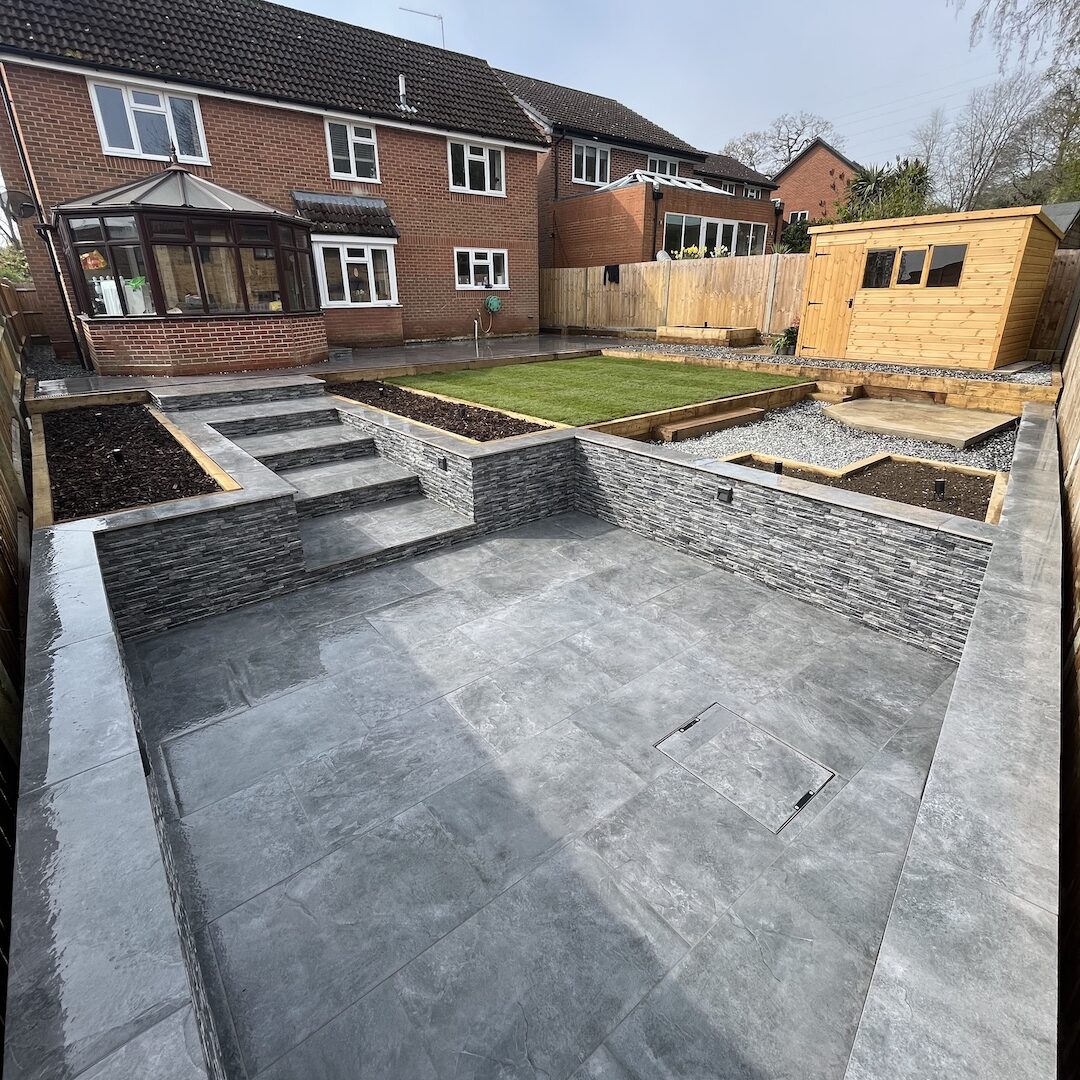Share
29 December 2023
Garden Transformation using Porcelain 900x600 Paving slabs
We caught up with Wellingtonia Landscaping - a small landscaping business based in Berkshire. Comprising of 3 members: Jake, Sam and Ali to ask them some questions about one of their recent garden projects featuring our porcelain 900x600 paving slabs.
How did you design this space?
The design brief was targeted at adding tiers to the garden, to best utilise the space. Our clients described the previous garden as a ‘mud slide’, not suitable for much. It housed a handful of sheds being used for storage, a rabbit hutch, an old tired patio and uneven grass. The previous conifers had been removed from the perimeter of the garden and new fencing had been installed. On our initial site visit we reviewed what Matt and Tabatha wanted to achieve from the garden and came out with our key outcomes. One shed big enough to store everything, a sunken entertaining area, easily maintained planting beds and a lawn area big enough for summer picnics and for the children to play on. Matt had provided us with a rough sketch, which was very helpful for us when providing a quote and getting an understanding of the area.
Before images:
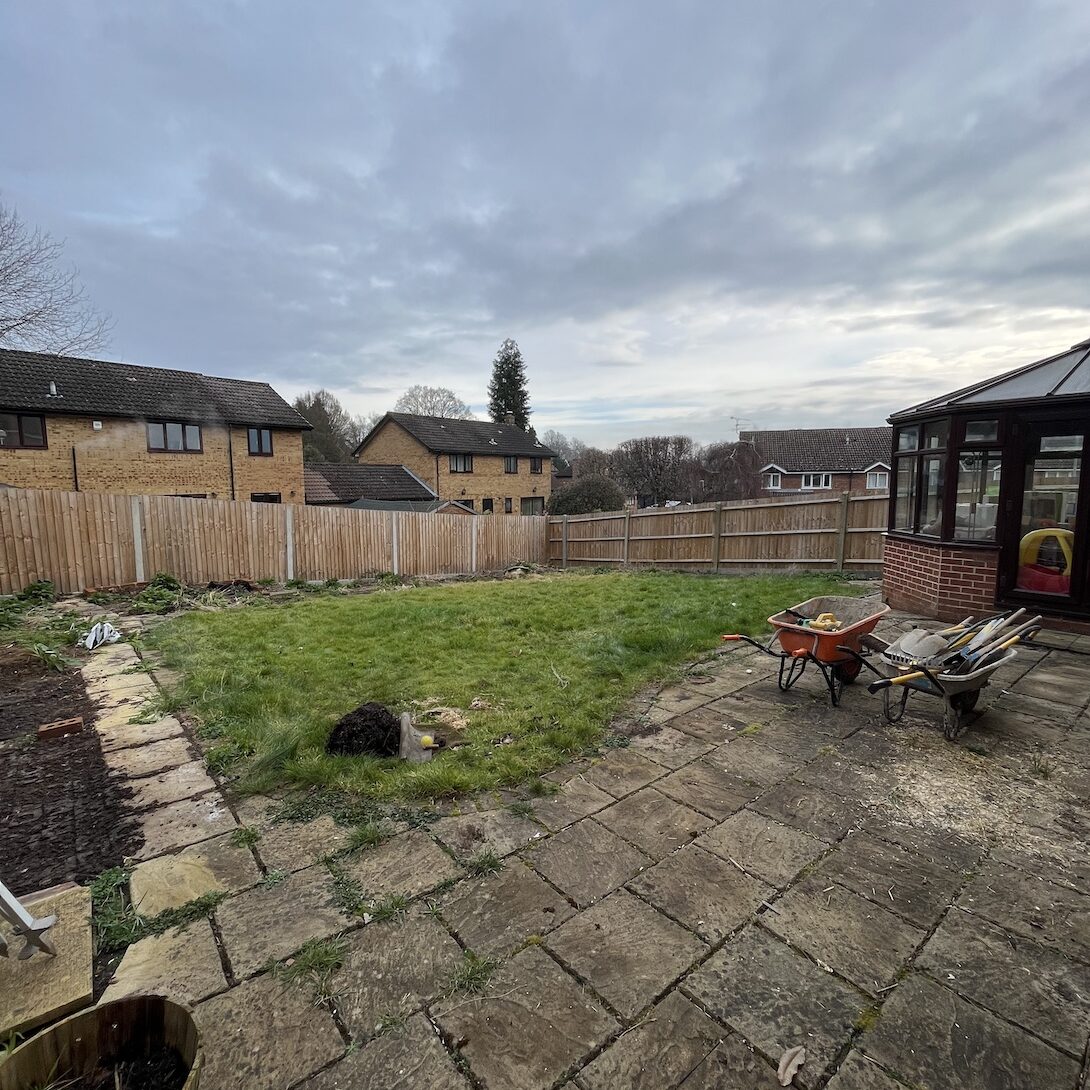
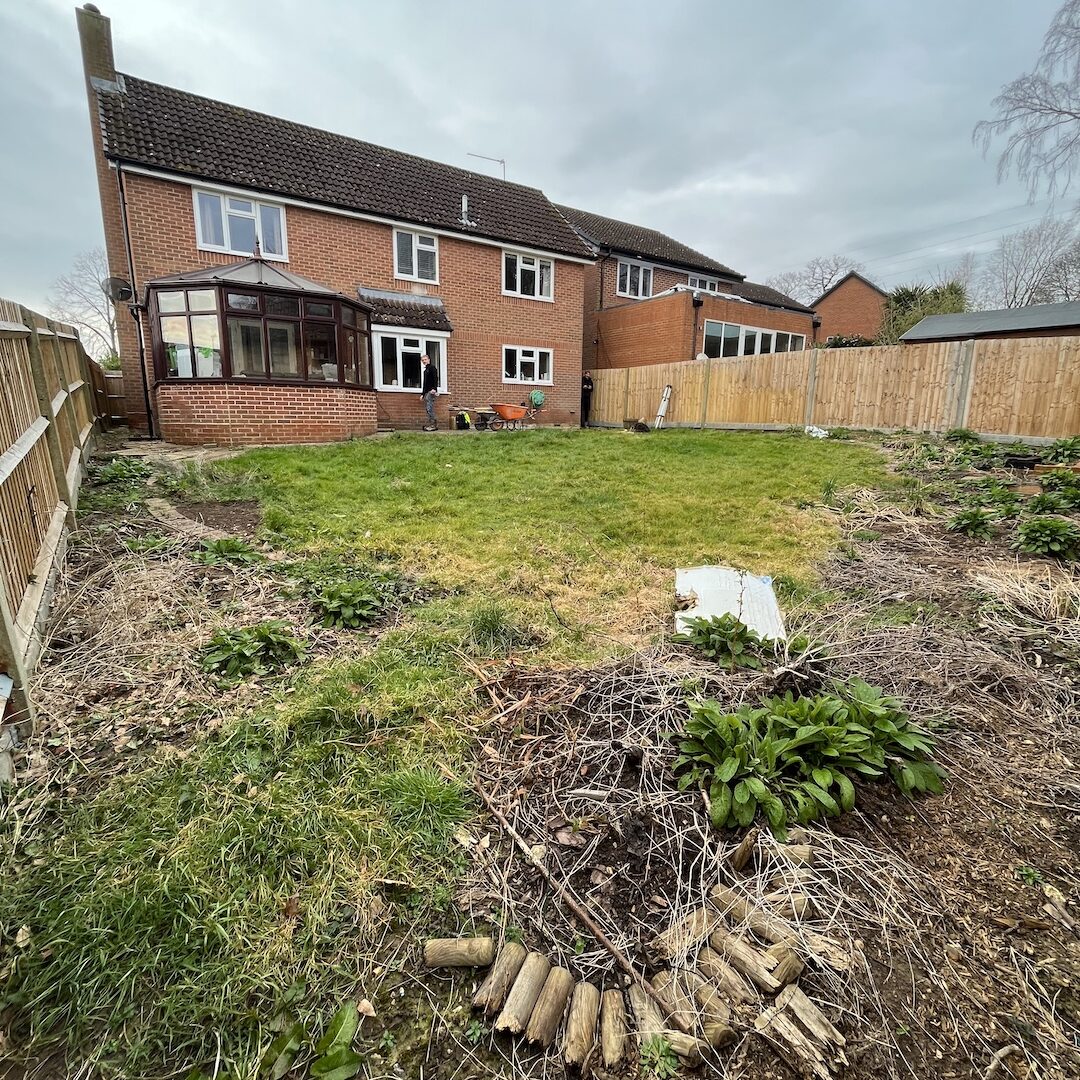
The star of the show was always going to be the sunken entertaining area. The natural slope, seen in the before pictures showed that the design of the garden had to include a series of tiers. The actual design was fairly straight forward, however making all the different levels flow into one another was our challenge. The biggest test was the drainage in the sunken entertaining area. The area is around 18sqm and is designed to be impermeable. To combat that we installed a slimlime acco drain underneath the cladding at the back, running into a chamber where a pump sat ready to remove the water when needed. The pump has a clever feature in which it turns itself on when the water in the chamber reaches a certain height, it pumps the water into the existing drains. The porcelain paving slabs and cladding from Gardenstone were critical in the success of this garden feature and worked very well.
With regards to a plan, Jake and I had a fairly detailed plan of how we wanted to build the garden. This however went completely out of the window when on the second day we had a lot of rain, followed by the third day a lot of snow. It then didn’t stop raining for around 4 weeks, meaning that most of the job was carried out under our gazebo with tarpaulin sheets following us behind, to protect our hard work from the elements. Hopefully, some of the pictures show some of the weather we endured on the build.
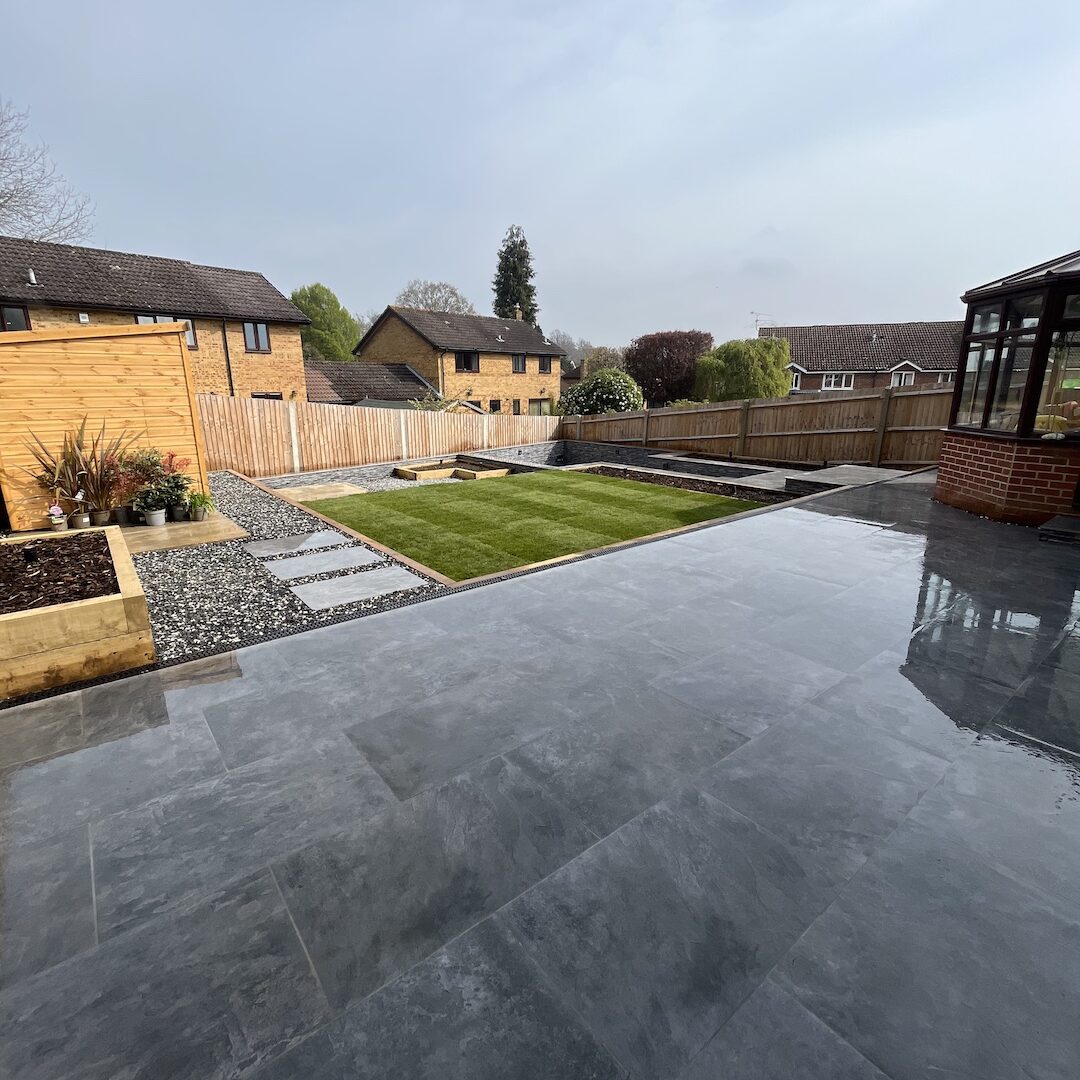
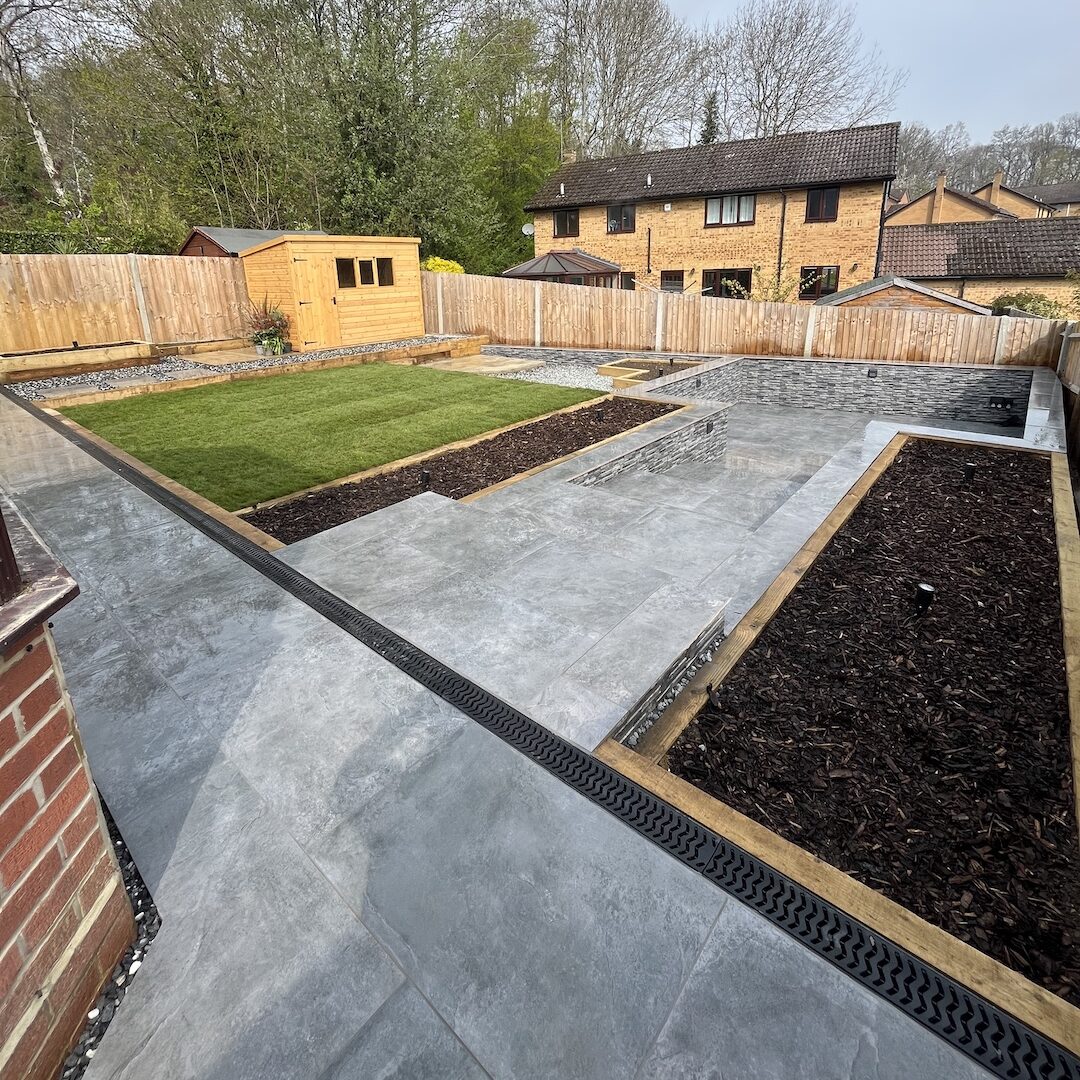
How did you find working with Gardenstone?
Westminster Stone recently brought a Gardenstone sales site local to us and Bob Khan had described their professional style, excellent product range and quality to us. Something we found to certainly be true during the build of this garden. Due to the space constraints at the front of the property we had both porcelain paving and porcelain cladding delivered in stages throughout the project, these were always on time aiding our build of the garden. Bob and Emily at the sales office were very helpful organising this. Tom the delivery driver was also excellent at navigating the tight driveway and delivery space.
What products did you use?
We used around 90sqm of Classic Priory Graphite 900x600 Porcelain Paving for the upper tier patio, the steps, coping stones and sunken area. We found that the dark colour of the slab and the veins in the slabs were brilliant. They also were great to work with, consistent sizes, easy to cut and limited camber made them great to work with.
We also used St Moritz Porcelain Cladding to clad all of our retaining walls. The texture of this cladding adds an intriguing feature to any garden. We also used them on corners and for the upstands of the steps. Both required precise mitre and small cuts which were made comfortable by the quality of the cladding.
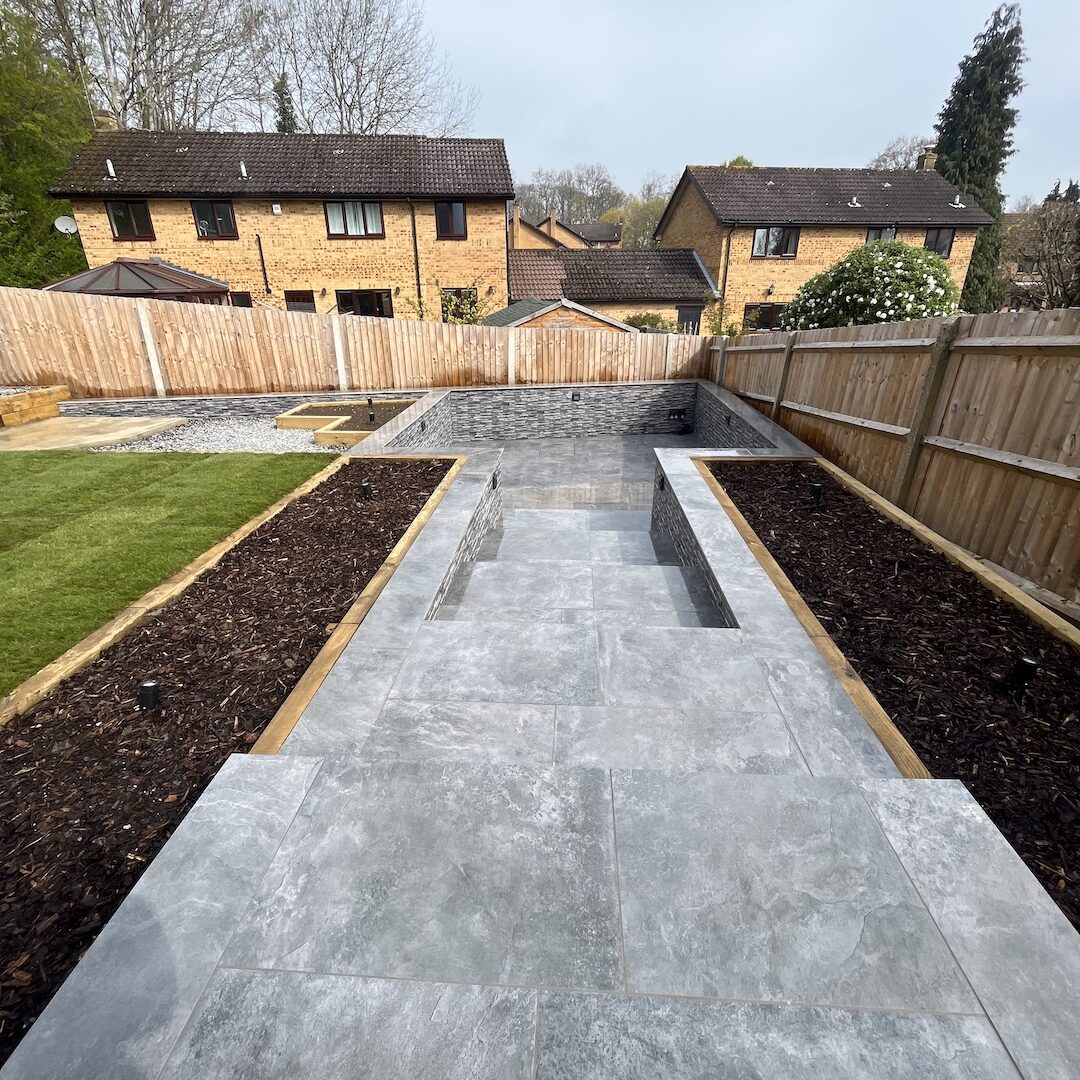
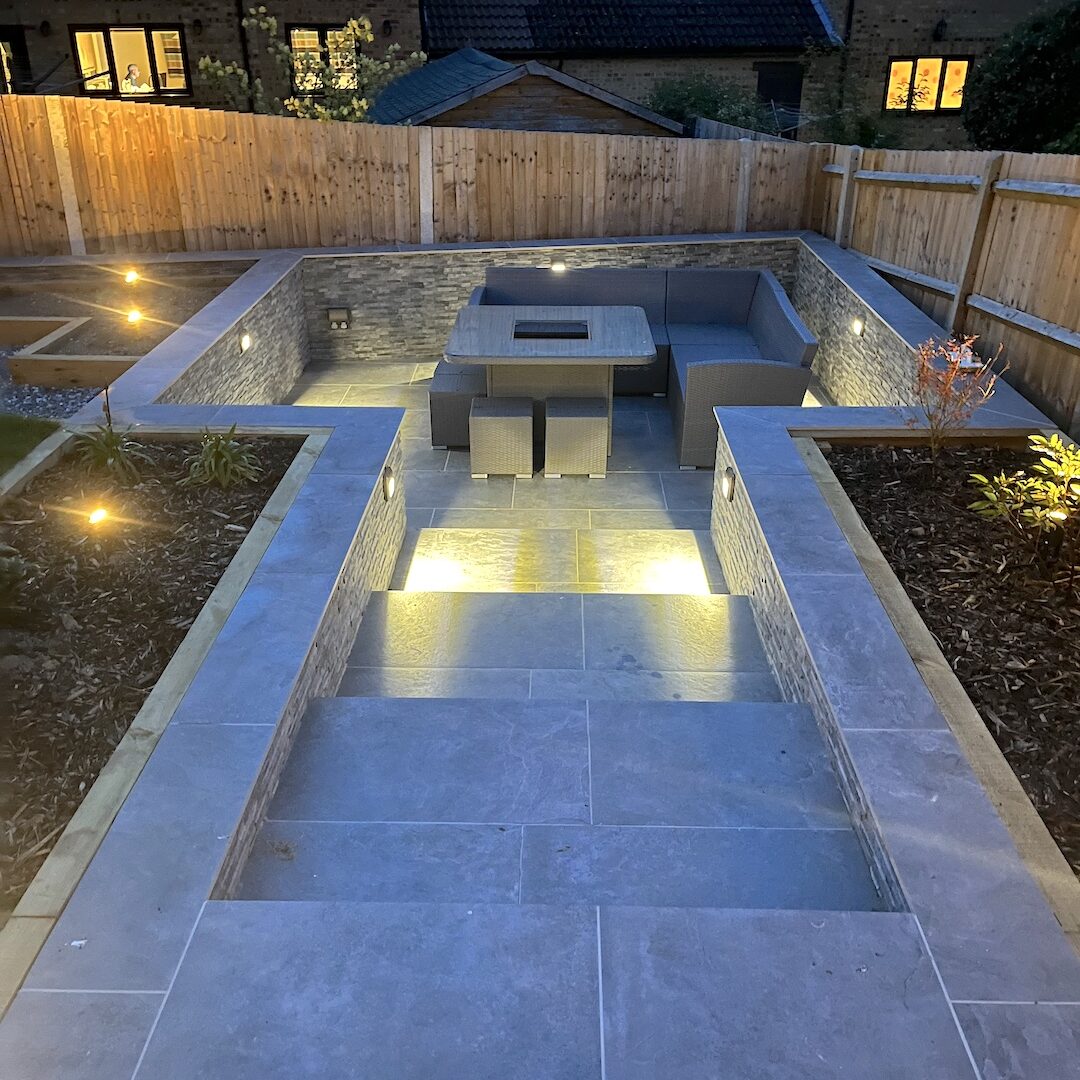
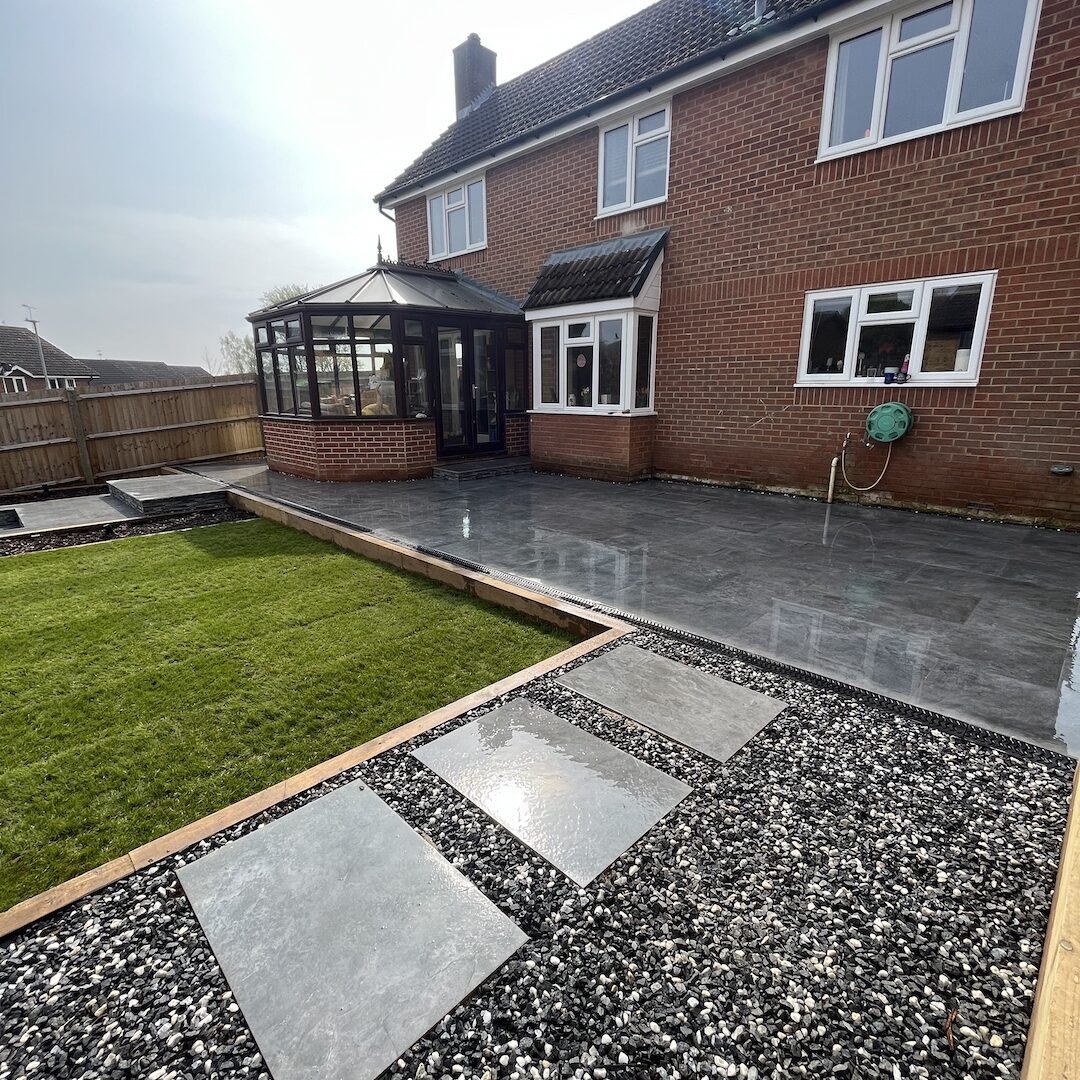
About Wellingtonia Landscaping
Wellingtonia Landscaping is a small landscaping business based in Berkshire. Comprising of just 3 members of the team: Jake, Sam and Ali. Their attention to detail and professionalism are at the forefront of their work and they strive to deliver this on all projects. They enjoy working on full garden domestic projects that can be completely rejuvenated.
📞 07905 694369

Buy 900x600 porcelain paving tiles
Porcelain tiles are extremely popular for creating low-maintenance and contemporary spaces within your garden or commercial landscape.
Gardenstone’s Porcelain range is R11 slip-resistant and has very low water absorption, so they are ideal for use around swimming pools, hot tubs and ponds. Porcelain tiles are algae and frost resistant so resistant to the British climate and they only require a small amount of annual maintenance. They are a contemporary alternative to traditional decking and can be used for patios, paths and terraces.
Frequently Asked Questions:
How much does 900 x 600 porcelain paving weigh?
The weight of porcelain paving can vary depending on its thickness and specific characteristics. However, a general estimate for the weight of 900 x 600 porcelain paving can be calculated based on the density of porcelain and the thickness of the paving.
Assuming the standard thickness of porcelain paving (typically around 20-25 mm), the weight of a square meter (m²) of porcelain paving can be estimated. For 900 x 600 porcelain paving with a thickness of around 20 mm, a square meter would weigh approximately 25.92 kilograms. Multiplying this by the total area you have will give you an estimate of the weight.
How heavy is a 900x600 paving slab?
A single 900x600 paving slab with a thickness of approximately 20mm would weigh approximately 25.92 kilograms.
What is the best gap for porcelain paving?
In the UK, the recommended gap for laying porcelain paving slabs can vary depending on several factors such as the size of the slabs, the specific brand or type of paving, and the intended use of the area. However, a common recommendation for the gap between porcelain paving slabs is typically around 2-5mm.
Here are a few considerations:
- Manufacturer's Recommendations: Some porcelain paving manufacturers may provide specific guidelines for the ideal gap between their slabs. It's advisable to check their recommendations as it can vary based on their product specifications.
- Climate and Usage: Climate conditions can impact the gap choice. In the UK, with its varied weather patterns, allowing a slightly larger gap (closer to 5mm) can accommodate for temperature fluctuations and potential expansion and contraction of the slabs due to weather changes.
- Aesthetics and Functionality: Smaller gaps (around 2-3mm) can provide a more refined look and may be suitable for decorative or indoor areas. Larger gaps might be more appropriate for outdoor areas or where drainage is a concern.
- Grout or Jointing Compound: The material used for grouting or jointing between the slabs can also affect the gap size. Some jointing compounds or grouts might recommend a specific gap size for optimal performance.
Why is 900x600 porcelain paving currently on trend?
Several factors contribute to the popularity of 900x600 porcelain paving in the UK:
1. Aesthetic Appeal: Larger format paving, like 900x600 slabs, offers a modern and spacious look. The larger size means fewer grout lines, creating a more seamless appearance, especially in contemporary outdoor designs.
2. Versatility: These larger slabs can be used in various settings, from patio areas to larger outdoor spaces, offering versatility in design options.
3. Durability: Porcelain is known for its durability and resistance to stains, scratches, and frost. This makes it an attractive choice for outdoor paving where weather conditions can be harsh.
4. Low Maintenance: Porcelain paving is relatively low maintenance compared to other materials. It's easy to clean and generally requires minimal upkeep, making it appealing for homeowners who want an aesthetically pleasing but low-maintenance outdoor space.
5. Innovation in Design: Manufacturers continually introduce new designs, textures, and finishes in 900x600 porcelain paving, catering to different tastes and trends in outdoor aesthetics.
6. Technological Advancements: Advancements in porcelain production have led to slabs that mimic natural stone, wood, or concrete with high fidelity, offering a wide range of design options without sacrificing durability.
7. Installation Efficiency: Larger slabs can cover more ground area with fewer pieces, potentially reducing installation time and effort compared to smaller-sized pavers.
The combination of these factors has contributed to the rising popularity of 900x600 porcelain paving in the UK, making it a sought-after choice for both residential and commercial outdoor projects.

